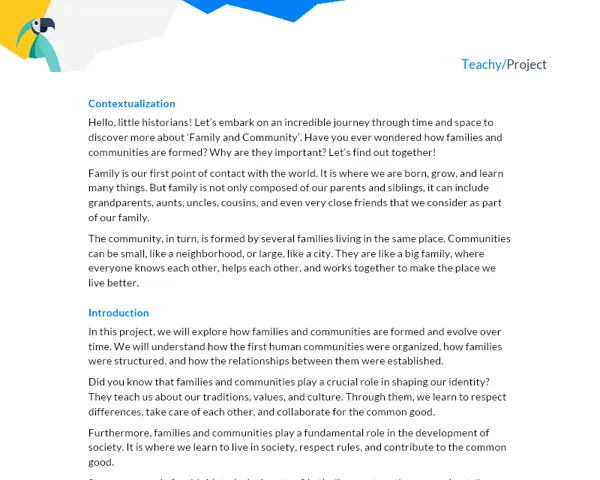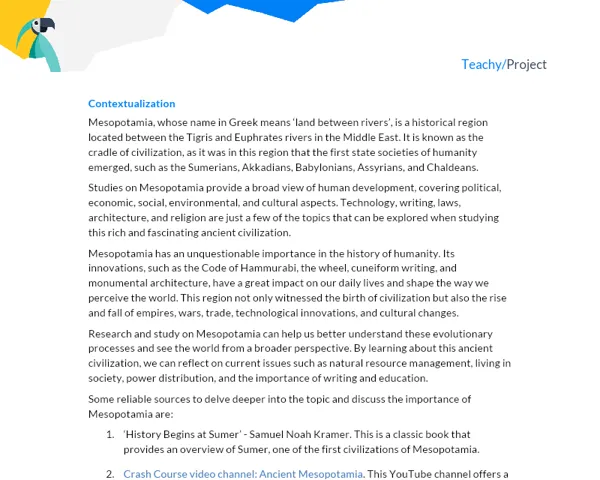Contextualization
Hello, kids! Are you ready to embark on an incredible journey through time? Our destination is antiquity, a period when humanity was just beginning to understand the concept of time and its measurement. Have you ever stopped to think about how people organized themselves and carried out their activities before clocks and cell phones? That's the question we want to answer in our project.
Time measurement is one of humanity's most important inventions. It helps us organize our lives, mark important events, and understand the passage of days, months, and years. But did you know that the way we measure time today is not the same as thousands of years ago? That's right! Throughout history, humans have developed various ways to measure time, from using shadows to creating super modern clocks.
Introduction
To begin, let's understand a little more about what time is. Time is a quantity that measures the duration or interval between two events. It can be measured in different ways, but the most common is the division into hours, minutes, and seconds. This time division we use today is called decimal time, and it was created by the Babylonians, a people who lived over 4,000 years ago.
Now, let's go back even further in time, to about 5,000 years ago, when people were just beginning to understand the concept of time. At that time, time was mainly measured by the position of the sun in the sky. People knew that the sun rose in the east and set in the west, and that the day was divided into two equal parts: morning and afternoon.
Over the centuries, humans have been refining their time measurement techniques. For example, the Egyptians developed a water clock called a clepsydra, which used the flow of water from one container to another to mark time. The Greeks, on the other hand, created the sundial, which used the shadow of an object to indicate the time of day.
And so, throughout history, humans have been creating more and more ways to measure time, until we reached the digital clocks and smartphones we use today. But even with all this progress, time measurement remains a fascinating subject full of mysteries to be unraveled. And that's what we're going to do in our project. Are you ready for the adventure?
Practical Activity
Activity Title: Building Our Own Sundials
Project Objective
The objective of this project is to allow students to have a practical experience of how people in ancient times measured time through sundials. In addition, the project aims to develop skills such as teamwork, time management, creativity, problem-solving, and communication.
Project Description
In this project, each group of students will build a sundial and explore how it works. You will learn how the shadow of an object changes position throughout the day and how we can use this change to mark time. You will also have the opportunity to research the history of sundials and how they were used in different cultures.
Required Materials
- A piece of cardboard or cardstock
- An ice cream stick or a tree branch
- Modeling clay or clay
- A pen
- A clock or cell phone to help mark time
Step by Step
-
Research: Start by researching what a sundial is, how it works, and how people in ancient times used it to measure time. Take note of the most important information to use later.
-
Planning: Based on your research, plan how you will build your sundial. Remember that you will need an object that casts a shadow, a marker to indicate the hours, and a support to hold the object.
-
Construction: Now it's time to get your hands dirty! Use the clay or modeling clay to secure the ice cream stick or tree branch on the cardboard or cardstock. Make sure the shadow-casting object is pointing to the north (if you are in the southern hemisphere) or to the south (if you are in the northern hemisphere).
-
Time Marking: Using the clock or cell phone, mark the position of the object's shadow every hour throughout the day. Try to do this for at least 6 hours to get more accurate results.
-
Results Analysis: When you finish, observe how the object's shadow changed position throughout the day. What does this tell us about the passage of time? How can we use this information to measure time?
-
Presentation: Finally, each group will present to the class what they learned about time measurement and how they built their sundial. You can make drawings, write a short text, or even record a video.
Delivery Format
Each group must submit a report containing the researched information, a record of the hours marked on the sundial, and a description of how the sundial was built. In addition, each group will make a presentation to the class, sharing what they learned and showing the sundial they built.
Have fun and enjoy the journey through time!


